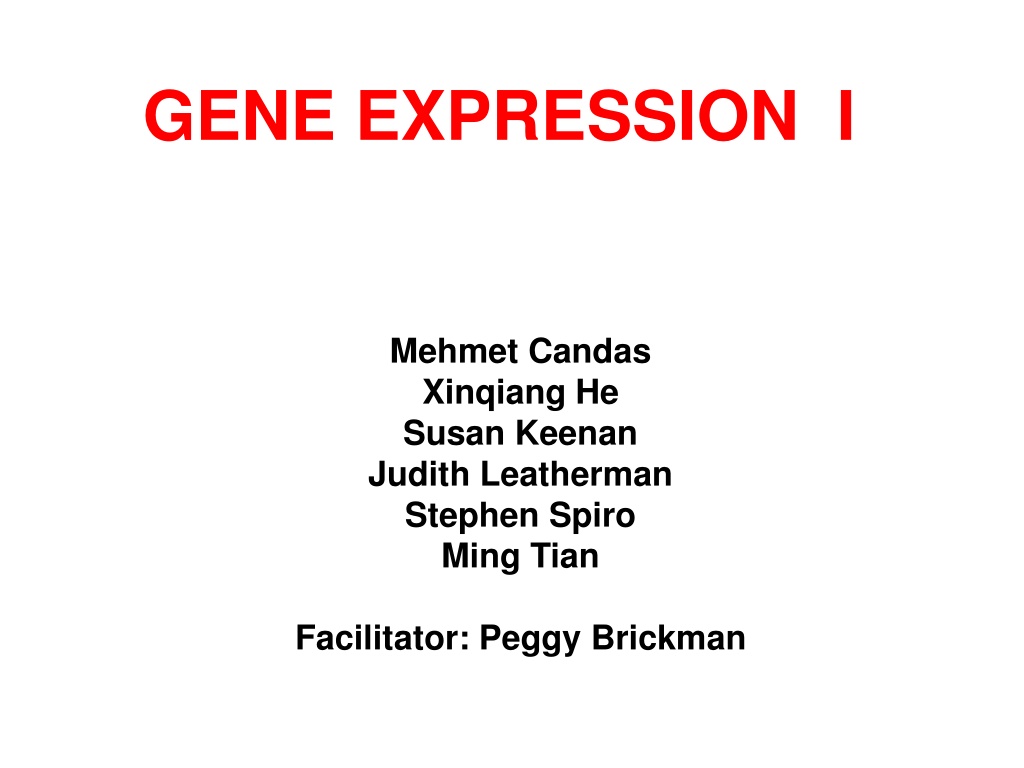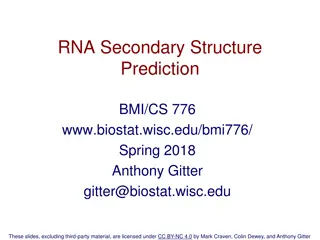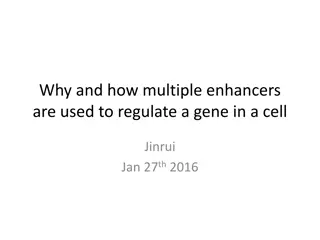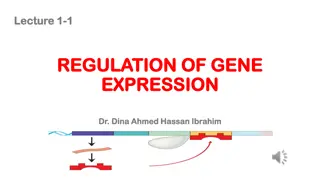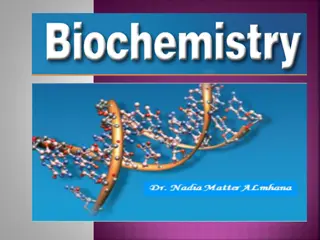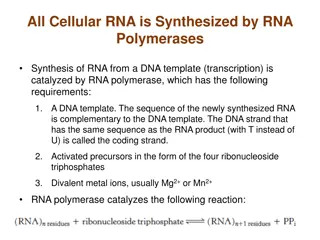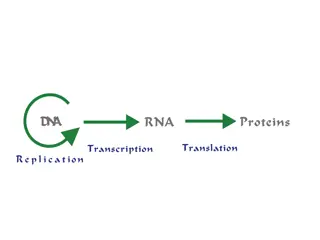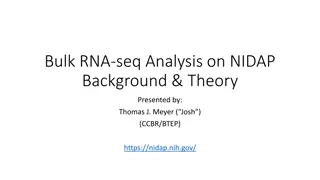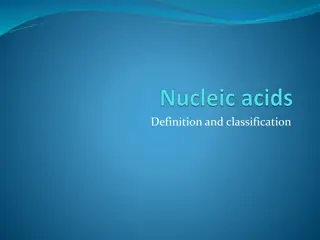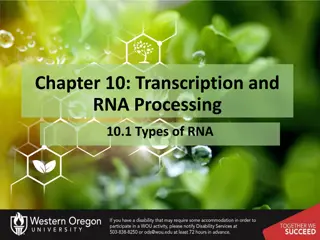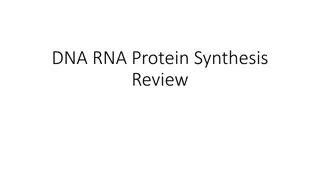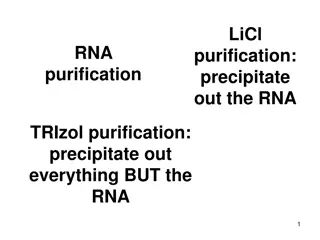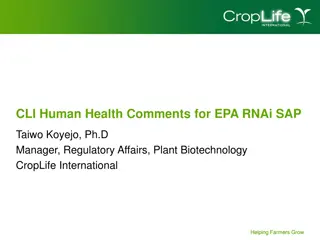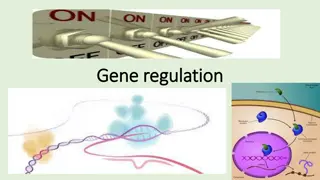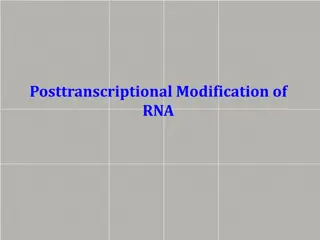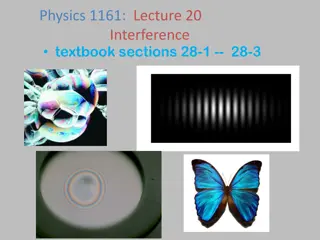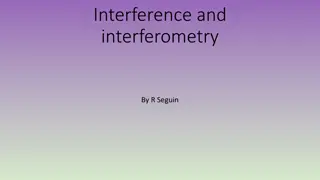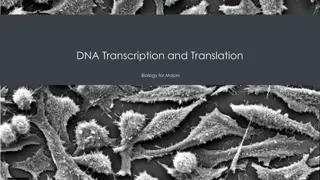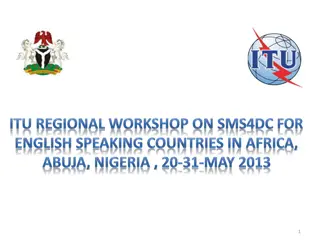Mechanisms of Gene Regulation Through RNA Interference
Explore the intricate processes of gene expression control at the RNA level, focusing on ribo-regulation and RNA interference. Learn about mechanisms such as mRNA localization, degradation, splicing, and more, and discover the potentials of RNAi-based therapeutics through insightful learning objectives and experimental approaches.
Download Presentation

Please find below an Image/Link to download the presentation.
The content on the website is provided AS IS for your information and personal use only. It may not be sold, licensed, or shared on other websites without obtaining consent from the author. Download presentation by click this link. If you encounter any issues during the download, it is possible that the publisher has removed the file from their server.
E N D
Presentation Transcript
GENE EXPRESSION I Mehmet Candas Xinqiang He Susan Keenan Judith Leatherman Stephen Spiro Ming Tian Facilitator: Peggy Brickman
Group 1: Gene Expression I Ribo-regulation: controlling gene expression at the level of RNA Gene expression can be regulated by multiple mechanisms that influence the activity of messenger RNA This teachable unit will be presented to a student body consisting of majors at the junior/senior level, in the context of a course covering molecular mechanisms of gene regulation The unit assumes that the students will have competency in genetics and molecular biology
Unit Learning Goals Students will be able to describe examples of mechanisms of gene regulation involving mRNA localization, degradation, capping and tailing, splicing, editing, and by RNA interference Outcome Students will be able to discuss ribo-regulation in the context of gene regulatory mechanisms that operate at other levels of the central dogma.
Tidbit RNA interference Learning Objectives Students will describe the mechanism of RNAi Students will evaluate and interpret research data Students will evaluate the potential for RNAi-based therapeutics Dicer (Giardia intestinalis)
Brain storm: How can the activity of a mRNA be regulated?
How can a specific mRNA in a cell be experimentally decreased? Target mRNA sense RNA AAAAAAAAA antisense RNA Double-stranded RNA is specifically degraded by cell Expression with antisense RNA Normal expression Izant and Weintraub, Cell 1984
Fire and Mello experiments with C. elegans (Fire et al. Nature 1998) 1. Inject purified antisense RNA Uninjected Clicker question: What will happen to the mRNA level? ? mRNA level A. Increase B. Decrease C. Stay the same uninjected
Fire and Mello experiments with C. elegans (Fire et al. Nature 1998) 1. Inject purified antisense RNA Uninjected Answer: B What will happen to the mRNA level? mRNA level A. Increase B. Decrease C. Stay the same Antisense RNA uninjected
Fire and Mello experiments with C. elegans (Fire et al. Nature 1998) Antisense RNA Uninjected mRNA level Antisense RNA uninjected
Fire and Mello experiments with C. elegans (Fire et al. Nature 1998) 2. Inject double- stranded RNA Antisense RNA Uninjected Clicker question: What will happen to the mRNA level? mRNA level A. Increase B. Decrease C. Stay the same uninjected Why did you answer as you did?
Fire and Mello experiments with C. elegans (Fire et al. Nature 1998) 2. Inject double- stranded RNA Antisense RNA Uninjected Answer: B What will happen to the mRNA level? mRNA level A. Increase B. Decrease C. Stay the same Antisense RNA uninjected
Fire and Mello experiments with C. elegans (Fire et al. Nature 1998) Double-stranded RNA Antisense RNA Uninjected mRNA level Antisense RNA Double-stranded RNA uninjected
2006 Nobel Prize in Medicine or Physiology RNA Interference A naturally occurring mechanism Destruction of mRNA results in the post transcriptional inhibition of gene expression and the prevention of protein synthesis.
Group Discussion Which one of the following diseases is amenable to RNAi-based threapy? Lymphoma overexpression of bcl2 Cystic fibrosis loss-of-function mutation of CFTR PKU loss of enzyme to breakdown phenylalanine What are the challenges and potential pitfalls in using RNAi-based therapies?
Homework: propose a mechanism for how the plant acquired resistance to the virus. Genetically-modified (GM) plant expressing a portion of a virus genomeis resistant to the virus.
